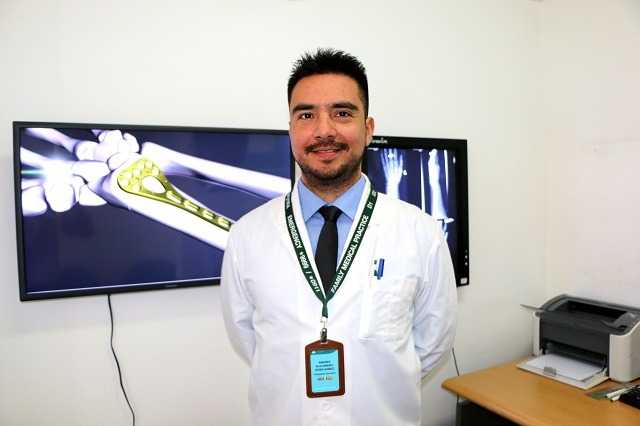Dr. Andres Sosa of Family Medical Practice Hanoi explains the common causes and treatment for runner’s knee, also known as patellofemoral pain.


Causes
The knee is a complex structure and is very sensitive. A number of factors can contribute to runner’s knee, including:
- Overuse, muscle imbalance and inadequate stretching.
- Complete or partial patellar dislocation
- Injury
- Tightness, imbalance, or weakness of thigh muscles
Symptoms
A dull, aching pain under or around the front of the kneecap (patella) where it connects with the lower end of the thighbone (femur). Pain occurs when walking up or down stairs, kneeling, squatting, and sitting with a bent knee for a long period of time.
Diagnosis
Your doctor will take a complete medical history and inquire about your symptoms and perform a physical examination on your knee to help determine the cause of pain. The doctor may order diagnostic imaging studies and blood tests.
Nonsurgical Treatment
After resting the knee until the pain and swelling go down, you may need reconditioning to regain full range of motion, strength, power, endurance, speed, agility, and coordination. Your doctor may prescribe an exercise program to normalise the flexibility and strength of thigh muscles, or recommend cross-training exercises that emphasize stretching the lower extremities.
Your doctor will tell you when you may gradually resume running and other athletic activities. Other nonsurgical treatments involve taping the kneecap or using a special brace for knee support during sports participation. Special shoe inserts (orthotics) may sometimes be prescribed and may help relieve the pain.
Surgical Treatment
When needed, surgical treatments include arthroscopy or realignment.
Self treatment
Stop doing any activity that causes knee pain.
Use the RICE formula:
- Rest. Avoid putting weight on the painful knee. Some athletes temporarily switch to a non-weight bearing activity, such as swimming.
- Ice. Apply cold packs or ice wrapped in a towel for short periods of time, several times a day.
- Compression. Use an elastic bandage such as a simple knee sleeve with the kneecap cut out that fits snugly without causing pain.
- Elevation. Keep the knee raised up higher than your heart.
Take non-steroidal anti-inflammatory medications such as aspirin or ibuprofen if you need more pain relief. If your knee does not improve with rest, see your doctor for a complete medical evaluation and diagnosis.
Prevention
- Stay in shape. Good general conditioning is important to controlling and preventing patellofemoral pain. If you’re too heavy, you may need to lose weight to avoid overstressing your knees.
- Stretch. Before running or any other exercise, first do a 5-minute warm up, followed by stretching exercises. Also stretch after exercise.
- Increase training gradually. Avoid sudden changes in the intensity and duration.
- Be sure that shoes fit properly and are in good condition. If you have flat feet, you may need shoe inserts.
- Ensure good running form – if in doubt, consult a quality coach
Dr. Sosa is an Orthopedic Surgeon at Family Medical Practice Hanoi, fellowship trained in Italy. To contact Dr. Andres Sosa for more advices about this or any other topic, head to
Family Medical Practice Hanoi in 298 I Kim Mã, Ba Đình. Tel: (024) 3843 0748. Email: hanoi@vietnammedicalpractice.com
FMP’s downtown Hồ Chí Minh location is: Diamond Plaza, 34 Lê Duẩn, District 1. Tel: (028) 3822 7848. Email: hcmc@vietnammedicalpractice.com
FMP Đà Nẵng is located at 96-98 Nguyễn Văn Linh Street, Hải Châu District, Đà Nẵng. Tel: (0236) 3582 699. Email: danang@vietnammedicalpractice.com



